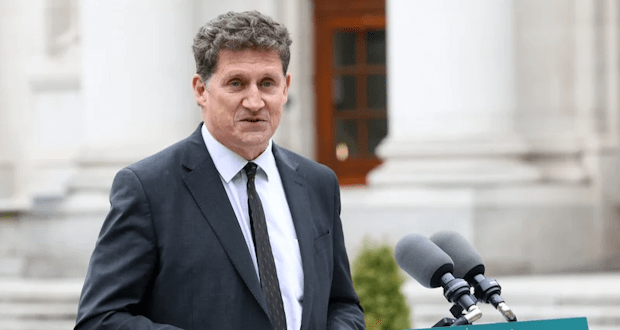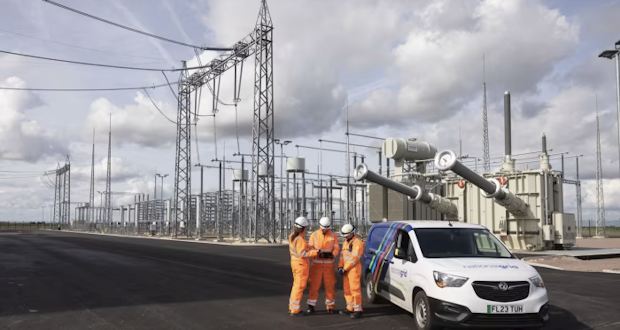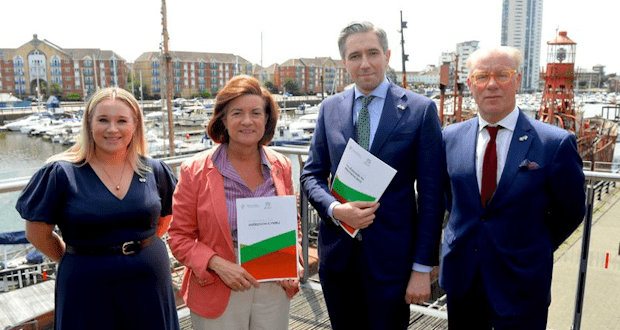The decision by UK energy regulator Ofgem to approve two new electricity interconnectors between Britain and the island of Ireland has been welcomed by outgoing Minister for Energy Eamon Ryan.
One interconnector project, LirIC, will link Scotland with Northern Ireland via a 142km subsea cable and deliver 0.7 GW of additional electricity capacity.
The other, MaresConnect, is a 190km subsea cable between Wales and the Republic of Ireland which will deliver 0.75GW of additional electricity capacity
Researcher in energy economics at UCD Professor Lisa Ryan said the news of these two interconnectors is “very welcome”.
“Anybody modelling renewable energy sees interconnectors as necessary to decarbonise,” Prof Ryan said.
Speaking in Baku, Azerbaijan, at the COP29 climate conference, Mr Ryan said the two planned interconnectors were “really good news for Ireland”.
“That’s hugely beneficial for us working with our neighbours, integrating electricity markets and relying on renewables and efficiency.
“Renewables exist in one form or another in every country be it solar or wind or hydro or geothermal or biomass. We just need to use it well,” he added.
The Government has set a target to have 80% of its electricity come from renewable sources by 2030.
There is also a target to have 22GW of renewable energy generated in Ireland by the end of the decade. This is mostly projected to be done by a combination of solar, onshore and offshore wind energy.
“The challenge of wind and solar is that it’s not predictable in its supply,” Prof Ryan said.
“Ireland is currently reliant on back up generation from gas and sometimes even coal.
“Interconnectors give another option that doesn’t rely on back-up fossil fuel generation, securing a future away from fossil fuels,” Prof Ryan added.
There are already two interconnectors between Britain and the island of Ireland. The Celtic Interconnector between Ireland and France is under construction.
The privately-developed Greenlink Interconnector between Wexford and Wales is due to be fully developed soon also.
Currently Ireland is buying electricity from these interconnectors but in the future, when more offshore wind energy is generated in this country, the State will be able to sell energy to Britain.
However, in a report from the Sustainable Energy Authority of Ireland (SEAI), published last week, Ireland is projected to miss its 2030 renewable energy targets.
The SEAI report warns that because the connection of large offshore wind projects is assumed to happen late in the decade, fossil fuels will remain the largest input to electricity generation until at least 2028.
It also warns that a delay in the development of renewable energy projects could be somewhat mitigated from an emissions perspective by imports, “there is little to no mitigation for our European renewable energy targets”.
In a statement to RTÉ’s Morning Ireland, grid operator EirGrid said that interconnection is “an important part of Ireland’s energy mix”.
“Particularly as we transition away from fossil fuels to more renewable energy.
“Interconnection will also enable Ireland to export renewable energy, and achieving greater levels of renewable energy over the coming years will be key in this regard,” it added.
The costs for the two new interconnectors for the Irish consumer have not been announced, however Ofgem estimates that the five interconnection projects it has recently announced will add between £2 and £5 per year onto an individual’s consumer electricity bills in Britain between the years 2030 and 2055.
Prof Ryan said that if Irish householders had to pay a similar amount in Ireland that would be “a good deal”.
“Especially when you consider that now energy prices are dictated by gas prices which the Ukraine war showed us can be hugely volatile in terms of price so moving away from that should be cheaper overall,” she added.
Original article: https://www.rte.ie/news/environment/2024/1114/1480842-ireland-uk-interconnector/



